Western Spotted Skunk
- January 16, 2024
- 0 comment
The Western Spotted Skunk, scientifically known as Spilogale gracilis, stands as a captivating and enigmatic member of the mustelid family. Characterized by its unique coat patterns, this small to medium-sized mammal captures the imagination of nature enthusiasts and researchers alike. The distinctive markings, featuring broken stripes and spots, set the Western Spotted Skunk apart from its counterparts. Found across a diverse range of habitats in North America, from arid deserts to wooded areas, these creatures showcase remarkable adaptability. With a preference for nocturnal activities, they navigate the darkness with finesse, engaging in a fascinating array of behaviors.
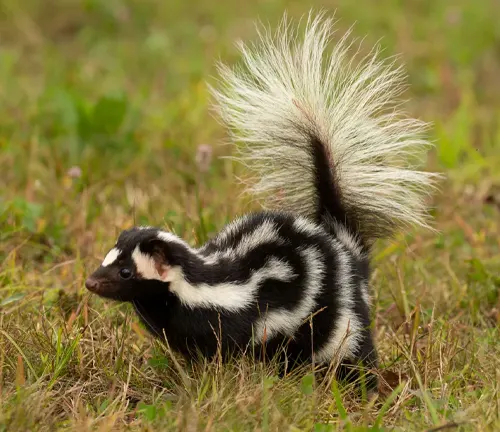
From their agile climbing skills to the intricate courtship rituals during mating season, the Western Spotted Skunk reveals a wealth of captivating traits. As these elusive beings face threats from habitat loss and human activities, understanding and appreciating their significance in the ecosystem becomes imperative. Exploring their role in nature, their interactions with humans, and the ongoing conservation efforts dedicated to their survival unravels the layers of mystery that surround the Western Spotted Skunk, making it a truly remarkable and essential species in the tapestry of North American wildlife.
| Specifications | Details |
|---|---|
| Scientific Name | Spilogale gracilis |
| Size Range | Small to Medium-sized (12 to 20 inches) |
| Coat Patterns | Distinctive Broken Stripes and Spots |
| Habitat | Diverse, Including Arid Deserts and Wooded Areas |
| Nocturnal Habits | Active Primarily During the Night |
| Climbing Ability | Agile Climbers, Capable of Ascending Trees |
| Mating Behavior | Elaborate Courtship Rituals During Mating Season |
| Diet | Insects, Small Mammals, Fruits |
| Defense Mechanism | Noxious Liquid Spray (Similar to Common Skunks) |
| Lifespan | Average of 3 to 4 Years |
| Gestation Period | Around 40 Days |
| Natural Predators | Owls, Coyotes, Larger Mammals |
| Conservation Status | Varied, Facing Threats from Habitat Loss |
| Geographic Range | North America |
| Significance in Folklore | Holds Cultural Importance in Native American Traditions |
Western Spotted Skunk: A Closer Look at Nature’s Enigmatic Acrobat
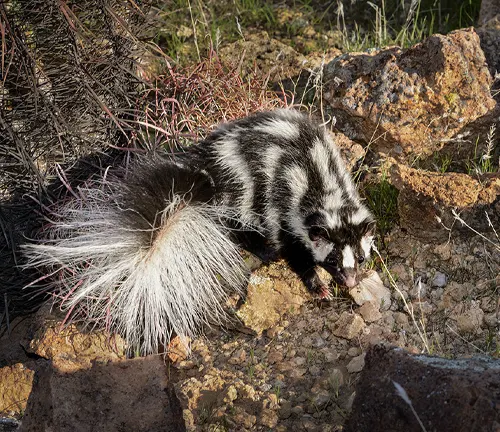
The animal kingdom is home to a plethora of intriguing species, each with its unique set of characteristics. One such captivating creature is the Western Spotted Skunk (Spilogale gracilis), a mesmerizing member of the mustelid family.
Definition of Western Spotted Skunk
Before we embark on our journey into the realm of Western Spotted Skunks, let’s establish a clear understanding of what defines them. The Western Spotted Skunk, scientifically known as Spilogale gracilis, is a small to medium-sized mammal characterized by its distinct coat patterns, making it stand out among its carnivorous counterparts.
Overview of Unique Characteristics
What sets the Western Spotted Skunk apart from its relatives? The answer lies in its unique coat patterns, nocturnal habits, and intriguing social structure. Let’s unravel the mystery surrounding these elusive creatures.
Habitat and Distribution
Geographic Range
The Western Spotted Skunk is found across a diverse range of habitats in North America, from arid deserts to wooded areas. Understanding their geographic distribution provides valuable insights into their adaptability and survival strategies.
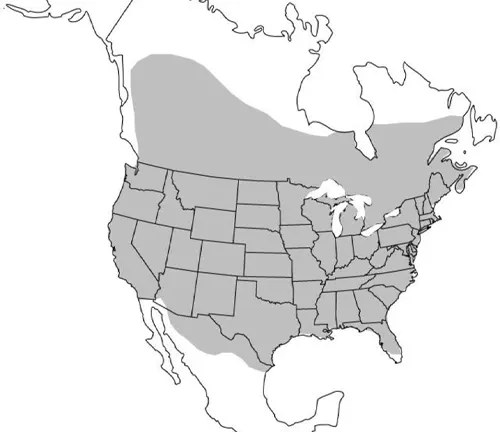
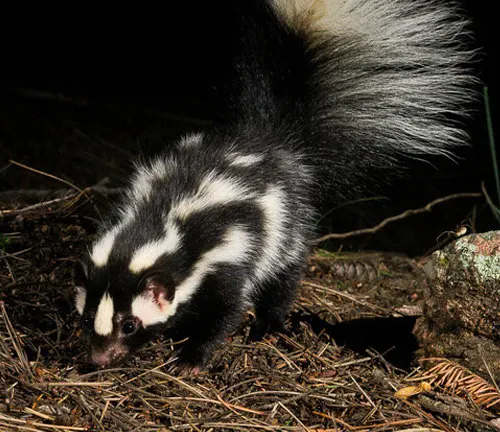
Preferred Habitats
While their geographic range is extensive, Western Spotted Skunks exhibit preferences for specific habitats. Exploring these preferences sheds light on their ecological niche and how they interact with their surroundings.
Physical Characteristics
Size and Weight
Despite their small size, Western Spotted Skunks are agile and proficient hunters. Examining their size and weight contributes to understanding their physical adaptations for survival.
Distinctive Coat Patterns
The striking coat patterns of Western Spotted Skunks serve various purposes, from camouflage to communication. Let’s explore how these patterns play a crucial role in their daily lives.

Behavior and Lifestyle
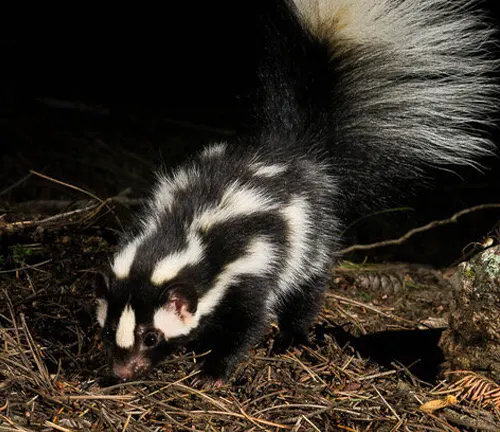
Nocturnal Habits
As nocturnal creatures, Western Spotted Skunks navigate the darkness with finesse. Unveiling their nocturnal habits provides a glimpse into their nightly adventures and the challenges they face.
Social Structure
Contrary to popular belief, Western Spotted Skunks exhibit a fascinating social structure. Understanding their interactions and group dynamics adds depth to our appreciation of these enigmatic beings.
Diet and Feeding Habits
Primary Diet
Western Spotted Skunks are opportunistic feeders, relying on a diverse diet. Exploring their primary food sources offers valuable insights into their role as carnivores in the ecosystem.
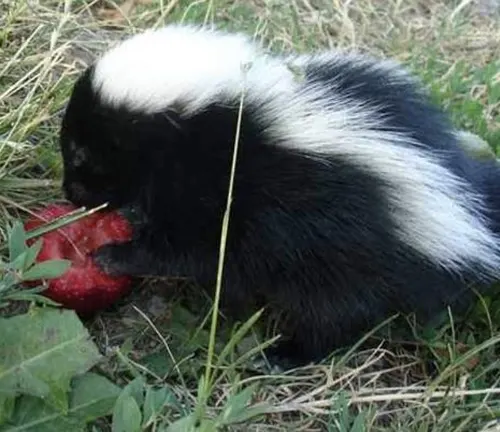
Hunting Techniques
The art of hunting is finely honed in Western Spotted Skunks. Delving into their hunting techniques sheds light on their adaptive strategies and survival instincts.
Reproduction
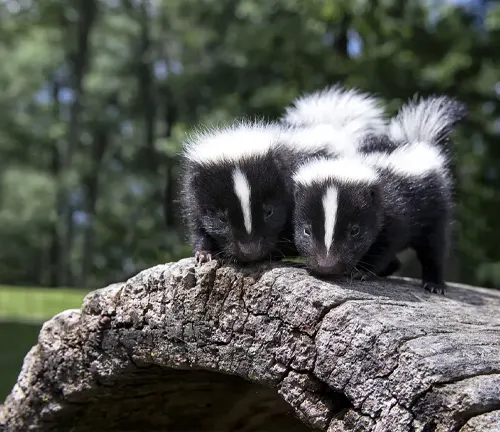
Mating Season
The reproductive cycle of Western Spotted Skunks is a fascinating aspect of their biology. Examining their mating season provides a glimpse into the intricate dance of courtship.
Gestation Period
The gestation period is a critical stage in the life cycle of these creatures. Understanding the duration of gestation unveils the challenges faced by mothers in ensuring the survival of their offspring.
Threats and Conservation Status
Natural Predators
While Western Spotted Skunks possess formidable defense mechanisms, they are not without natural predators. Identifying these predators contributes to our understanding of the delicate balance in their ecosystem.
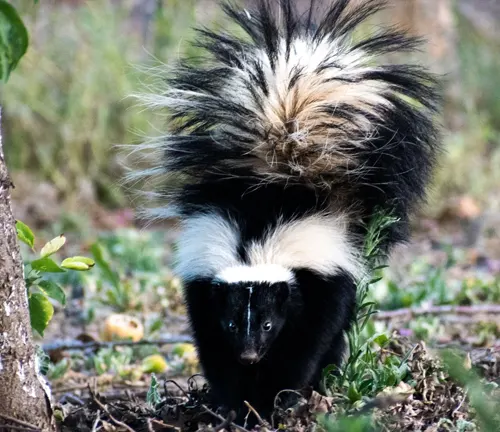
Human-Induced Threats
Human activities pose significant threats to the survival of Western Spotted Skunks. Exploring these threats underscores the importance of conservation efforts and responsible coexistence.
Conservation Efforts
Dedicated organizations and conservationists work tirelessly to protect Western Spotted Skunks. Examining ongoing conservation efforts provides hope for the continued existence of these remarkable creatures.
Interaction with Humans
Historical Perspectives
The relationship between Western Spotted Skunks and humans has evolved over time. Unraveling historical perspectives sheds light on cultural attitudes and perceptions surrounding these elusive creatures.
Encounters in Urban Areas
As human settlements expand, so does the potential for encounters with Western Spotted Skunks. Examining these interactions in urban areas raises awareness about coexisting harmoniously with wildlife.
How to Spot Them in the Wild
Tips for Observing Western Spotted Skunks
For enthusiasts eager to catch a glimpse of these elusive creatures, a set of tips for wildlife observation can enhance the chances of a successful encounter.
Responsible Wildlife Watching
Respecting the boundaries of wildlife is paramount. Understanding how to observe Western Spotted Skunks responsibly ensures minimal disturbance to their natural behaviors.
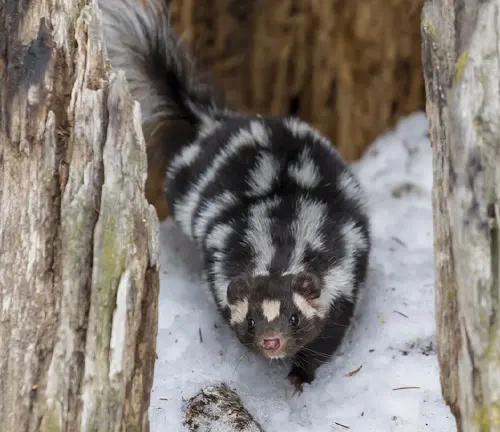
Ecological Role
Every species plays a vital role in maintaining ecological balance. Understanding the specific contributions of Western Spotted Skunks emphasizes their importance in the broader ecosystem.
Interconnectedness with Other Species
The intricate web of interactions between species underscores the interconnectedness of ecosystems. Exploring how Western Spotted Skunks interact with other species reveals the delicate harmony of nature.
Research and Discoveries
Ongoing Studies
Scientific research continues to uncover new aspects of Western Spotted Skunk biology and behavior. Delving into ongoing studies provides a glimpse into the frontier of our knowledge.
Recent Findings
Stay abreast of the latest discoveries in Western Spotted Skunk research, offering readers a window into the evolving understanding of these captivating creatures.
Different Species
Eastern Spotted Skunk
(Spilogale putorius)
Found in the eastern part of North America, this species is known for its smaller size compared to the Western Spotted Skunk.
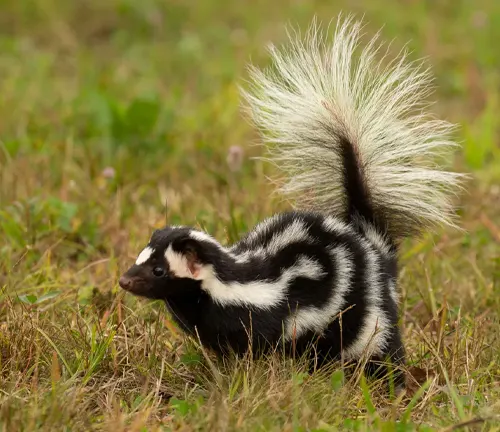
Southern Spotted Skunk
(Spilogale angustifrons)
Inhabiting the southern regions of the United States, the Southern Spotted Skunk has a distinctive appearance and is smaller than its western counterpart.
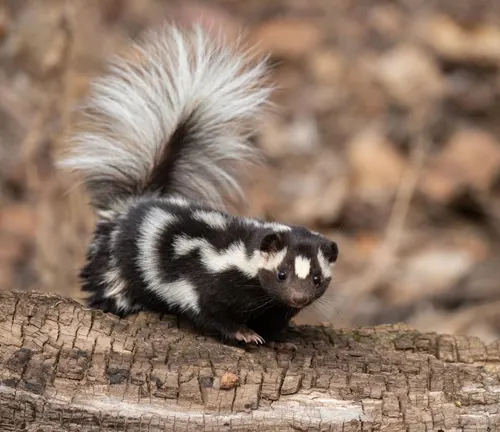
Pygmy Spotted Skunk
(Spilogale pygmaea)
Considered the smallest of the spotted skunk species, the Pygmy Spotted Skunk is found in Central America and parts of Mexico.

Frequently Asked Questions (FAQs)
- What is the size range of Western Spotted Skunks?
Western Spotted Skunks are typically small to medium-sized, with adults ranging from about 12 to 20 inches in length. - How long do Western Spotted Skunks live in the wild?
In their natural habitat, Western Spotted Skunks have an average lifespan of 3 to 4 years. - Are Western Spotted Skunks endangered?
The conservation status of Western Spotted Skunks varies, but they face threats due to habitat loss and human activities. - What do Western Spotted Skunks eat in the wild?
Their diet primarily consists of insects, small mammals, fruits, and sometimes amphibians. - Do Western Spotted Skunks hibernate during winter?
Western Spotted Skunks do not hibernate but may become less active during extremely cold weather. - How do Western Spotted Skunks defend themselves from predators?
When threatened, Western Spotted Skunks can spray a noxious liquid as a defense mechanism, similar to their close relatives, the common skunks. - Can Western Spotted Skunks climb trees?
Yes, Western Spotted Skunks are agile climbers and can ascend trees when necessary. - What is the mating behavior of Western Spotted Skunks?
During the mating season, male Western Spotted Skunks engage in elaborate courtship rituals to attract females. - How many babies do Western Spotted Skunks have in a litter?
The average litter size is 2 to 4 kits, born after a gestation period of around 40 days. - Are Western Spotted Skunks territorial?
Yes, Western Spotted Skunks can be territorial, marking their territories with scent markings. - Do Western Spotted Skunks have any natural predators?
Natural predators of Western Spotted Skunks include owls, coyotes, and larger mammals. - Can Western Spotted Skunks be found in urban areas?
Western Spotted Skunks may venture into urban areas, especially if their natural habitat is encroached upon, but they prefer wooded and less populated regions. - Are Western Spotted Skunks kept as pets?
Keeping Western Spotted Skunks as pets is not recommended, as they have specific dietary and environmental needs that can be challenging to meet in a domestic setting. - How can I identify a Western Spotted Skunk from other skunk species?
Western Spotted Skunks have a distinctive coat pattern with broken stripes and spots, setting them apart from other skunk species. - What is the significance of Western Spotted Skunks in Native American folklore?
Western Spotted Skunks hold cultural significance in Native American folklore, often symbolizing agility and adaptability.


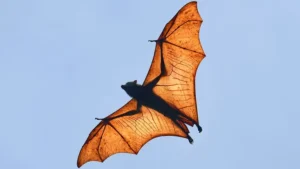


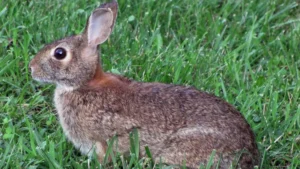
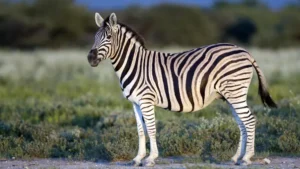
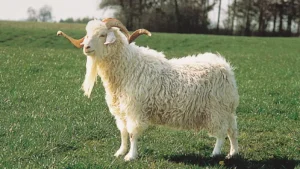




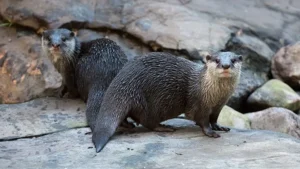
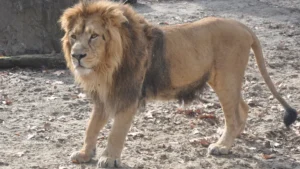
Leave your comment